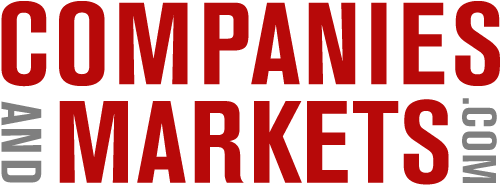Press release -
Global crystal oscillators market led by Japanese, Taiwanese and American manufacturers
The global crystal oscillators market has been forecast to increase at a compound annual growth rate (CAGR) of 6% over the next five years, increasing from a valuation of $2,033.67 million during 2013, to hit a market value of $2,719 million by the year 2018.
A crystal oscillator is an electronic oscillator circuit that uses the mechanical resonance of a vibrating crystal of piezoelectric material to create an electrical signal with a very precise frequency.
This frequency is commonly used to keep track of time (as in quartz wristwatches), to provide a stable clock signal for digital integrated circuits, and to stabilise frequencies for radio transmitters and receivers.
The most common type of piezoelectric resonator used is the quartz crystal, so oscillator circuits incorporating them became known as crystal oscillators, but other piezoelectric materials including polycrystalline ceramics are used in similar circuits.
Most are used for consumer devices such as wristwatches, clocks, radios, computers, and cellphones. Quartz crystals are also found inside test and measurement equipment, such as counters, signal generators, and oscilloscopes.
The crystal oscillator market is being triggered by a number of factors. The growth of smartphone and tablet market, deployment of 3G & 4G networks, increase in demand for high end automotive, and advancement in healthcare equipment are some of the factors currently driving this market.
While use in telecommunications devices continues as the largest application for crystal oscillators, accounting for more than half of all shipments, this share will drop slightly. Most of this loss will be gained by the consumer electronics and entertainment segment, a category in which shipments will grow by 50%.
Among the top 21 ranking crystal oscillator manufacturers worldwide by revenue in 2010, Japanese enterprises occupied the top 4 positions, while Taiwanese and American manufacturers held respectively 7 and 4 positions.
In respect of the revenue comparison between 2010 and 2009, manufacturers like Epson Toyocom, Rakon, TXC, HELE, SIWARD, and TAISAW progressed rapidly, yet TEW and Pericom saw decline. In general, most of the Japanese crystal oscillator enterprises were in stable development, large groups of Taiwanese counterparts in relatively rapid growth, while the majority of American ones in comparatively slow progress or downslide.
For more information on the global crystal oscillators market, see the latest research: Global Crystal Oscillators Market
Follow us on Twitter @CandMResearch
Topics
- Data, Telecom, IT
Categories
- global crystal oscillators market
- global crystal oscillators industry
Companiesandmarkets.com issues news updates and report summaries covering all major industries and sectors. The service provides additional client monitoring and timely alerts to breaking industry and sector news leading the day's business headlines. News articles, written by our staff, contain additional analyst insight, providing value added insight for our readers. News updates and real-time alerts on newly-released market reports are also available from our Facebook page, Twitter feed @CandMResearch and RSS links. We also welcome inquiries from business journalists and the news media.
